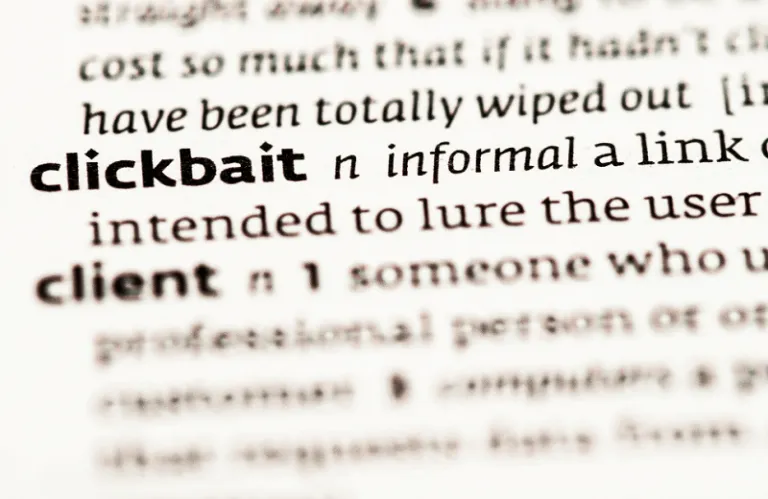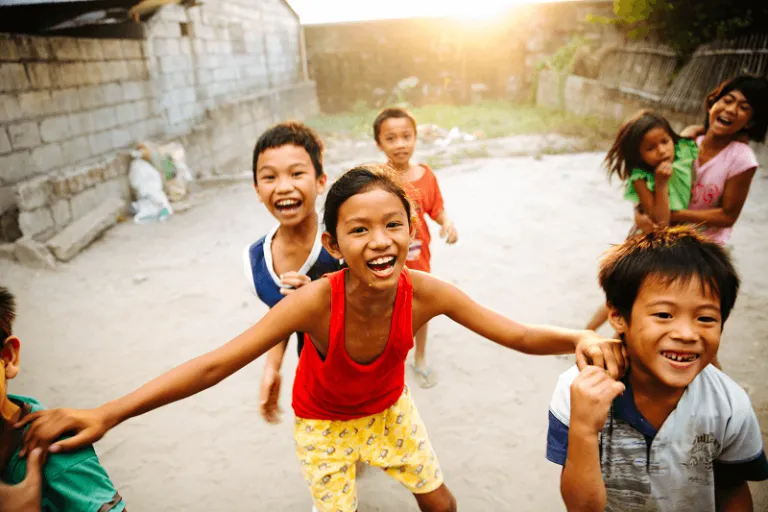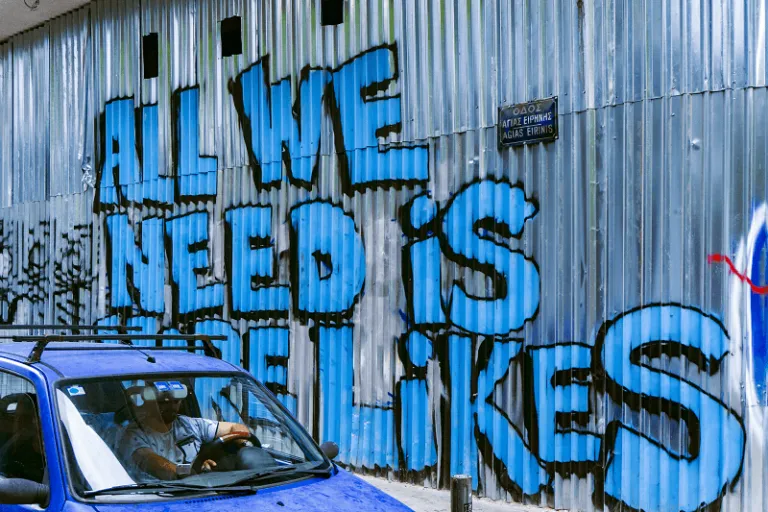The only plastic we need for travel.
Are You Tired of Pinoybaiting and Pinoybaiters Yet?

In 2020, word got out about a Hollywood actor who posted a little-known Philippine destination on his official Instagram. His fans would then write captions describing the image, which featured a boatman in Donsol, Sorsogon — of all places. Immediately following this was a call for submissions of photos showing other places in the country. By 2021, he specifically asked for photographs taken of natural attractions around the Philippines.
The recognition came almost out of nowhere, and it didn’t take long for Filipinos to join in on the hype. Not to mention, it came from someone who you’d think would barely know anything about the Philippines. But the actor’s intention was made clear from the beginning: The written and visual contributions would be part of an online poetry and film series he started for his own community of creative professionals. And they feature a few other select countries, too.

Nevertheless, the project racked up an impressive number of submissions from Filipinos, all the while inciting some form of inspiration from them in these times. After all, this isn’t the first time someone overseas took notice of the Philippines. In most cases, one thing that never seems to fail is our instant excitement over these recognitions. So much that many other foreigners, celebrities or not, have emerged to take full advantage of it.
Also read: 5 Foreign Experiences That Made Me Miss Life in the Philippines
Pinoybaiting: What is it?
To understand Pinoybaiting, one must first go back to the definition of clickbaiting, which may have even inspired the new concept. According to the Merriam-Webster Dictionary, clickbait is “something (such as a headline) designed to make readers want to click on a hyperlink especially when the link leads to content of dubious value or interest.” Here, the element of making someone want something is clear. It’s advertising in the end.
Pinoybaiting isn’t so much different, except there’s the particular involvement of Pinoys or Filipinos. The new-age term is described by Urban Dictionary as “a Youtube marketing strategy that targets Filipinos for real quick Youtube views and followers, usually done by Koreans and American vloggers due to their awareness of Filipinos worshipping something about America or South Korea.”

Although not necessarily limited to the video-sharing platform, it’s where most of these foreigners, known as Pinoybaiters, are found. More often than not, these people are also unknowledgeable of the Philippines. Hence, they rely on their ‘reactions’ to describe their experience of the country. Subsequently, there are the innumerable reaction videos you see on YouTube that come with thumbnail texts like “[Nationality] reacts to Filipinos”, “I did not expect this”, and the like.
In other cases, Pinoybaiters who have actually visited the Philippines or met Filipinos tend to over-exaggerate (note the deliberate redundancy) their experiences. Exaggerated, because they mostly only share one side of the topic they attempt to talk about — the positive and flattering. Give your best compliment about the Philippines and Filipino culture, or suffer the wrath of Filipinos online. Say a few not-so-positive truths, and you can go as far as getting banned from entering the Philippines — which has already happened to a few foreign celebrities in the past.
More than YouTube reaction videos, Pinoybaiting exists in online awarding or recognition events, be it for beauty pageants or the travel industry. Yes, Philippine talent and destinations are one of a kind. But for international institutions to name our beauty queens and islands as the ones to beat (sometimes for several years in a row) seems a bit much, don’t you think? Of course, our part in this as the world’s biggest social media users can’t be denied as well.
Also read: 20 Reasons Why Travelling to the Philippines Is a Total Waste of Time
Why it can be tiring
Just like that, the whole world seems to have fallen in love with the Philippines and Filipinos. From our beaches and cuisine to our languages and public figures, suddenly, we can do no wrong in the eyes of those outside the country. Some call it appreciation, while others refer to this phenomenon as its less sugar-coated label, Pinoybaiting — at least when it comes to people who have done it one too many times, and for purposes other than to speak facts.

Talking about these uniquely Philippine things in a positive way is not innately bad. But to do so for fame and money, with generous amounts of deception and fabrication, can be. Worse, they do it with the impression that while the number of Filipino social media users is one of the highest in the world, many of them don’t take these types of content with a grain of salt. Thus, making them the perfect candidates for the new online phenomenon that is Pinoybaiting.
It can be tiring because these videos and other similar creations mostly come with very little to no originality and creativity, even from an objective point of view. With overused formulaic headlines and all-around editing, they’re about as predictable and boring as watching paint dry. It can be tiring as it is dangerous because a lot of this content has utilised at least one form of manipulation and exploitation among Filipinos, something we can’t easily pass off as “mere entertainment”.
Somewhere in the online world, Filipinos who have stopped buying into Pinoybaiting videos also brought up a rather vital perspective on the matter. More than our attention, foreigners have unknowingly been preying on our willingness to be validated. This is mostly rooted in our colonial mentality, if not insecurity per se. In reaction, foreigners who are actually guilty of Pinoybaiting touched upon wanting to promote the Philippine culture to their readers; however, a bulk of what they really offer is an alarmingly false sense of approval.
Also read: I Quit Social Media During the Pandemic — Here’s What Happened
Can we do something about it?
It goes without saying that much of social media revolves around the idea of reacting and getting a response. But, as with other online content, moderation and educating ourselves are key. As for those who continue to create Pinoybait content, the more civil response would be to let them be. The reality is, as long as you’ve been spending the last few years on social media and are well versed about what authentic content looks like,t, then there’s nothing to worry about.

Thanks to their easily recognisable facade of overly made-up thumbnails coupled with the most obscure topics in Philippine culture, it’s also easy to stay clear of these types of online content — just in case they become too annoying and even more tiring. Remember that the more you engage with them (whether by commenting, liking, or sharing them) the more Pinoybaiters think they can continuously get away with using Filipinos further for their own gain.
Alongside these notorious Pinoybaiters are people who genuinely care about and are truly interested to know more about the Philippines. They go out and meet locals, take the time to know about Filipino food before or after tasting it, and give a balanced feedback of their experiences throughout the country. If they actually lived or are currently living in the Philippines as foreigners, the more they have real, first-hand insights to offer to the world, rather than a tireless cycle of Pinoybait content. As a Filipino, which one are you more likely to follow?
Featured image credit: mohamed_hassan | Pixabay
Published at
About Author
Subscribe our Newsletter
Get our weekly tips and travel news!
Recommended Articles
14 Best Credit Cards for Travel in the Philippines 21AM Digital Museum by CCP Launches on 25 Feb 2022 View the inaugural exhibition for free!
12 #Adulting Apps Every Pinoy Millennial Should Have Confession: As I continue to progress further into my 20s, I undeniably find myself morphing into the tita I never thought I would be. And by this, I mean I’ve learned to (obsessively) monitor my expenses through various #adulting apps, realised we really do have food at home (because eating out has made a giant […]
10 Aesthetic Electric Fans That Scream #HomeGoals We scoured the Internet for the prettiest ones.
Use This Aesthetic, Space-Saving Foldable Tabo for a Variety of Things Great for the kitchen, bathroom, laundry, and even backpacking or camping!
Latest Articles
Lee Jun-hyuk Finds His Favourite View in the Philippines A heartfelt moment from his Manila fan meet
Gen Z Pinoys Are Creating Travel-Smart Apps for Daily Life Tech meets everyday travel
Cebu Pacific Flight to Tawi Tawi Returns to Zamboanga Due to Technical Issue Flight delay due to safety check
Explore Marawi: The Filming Location of Incognito’s Intense Last Mission Discover why Marawi City was chosen as the powerful filming location for Incognito’s explosive finale. A real-world setting that brings depth to the action and a spotlight to Mindanao.
How to Explore Chongqing, China: A Guide for Filipinos Hotpot, Cable Cars, Culture, and More!

